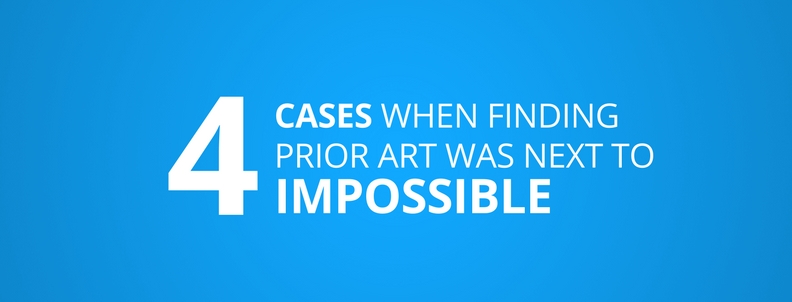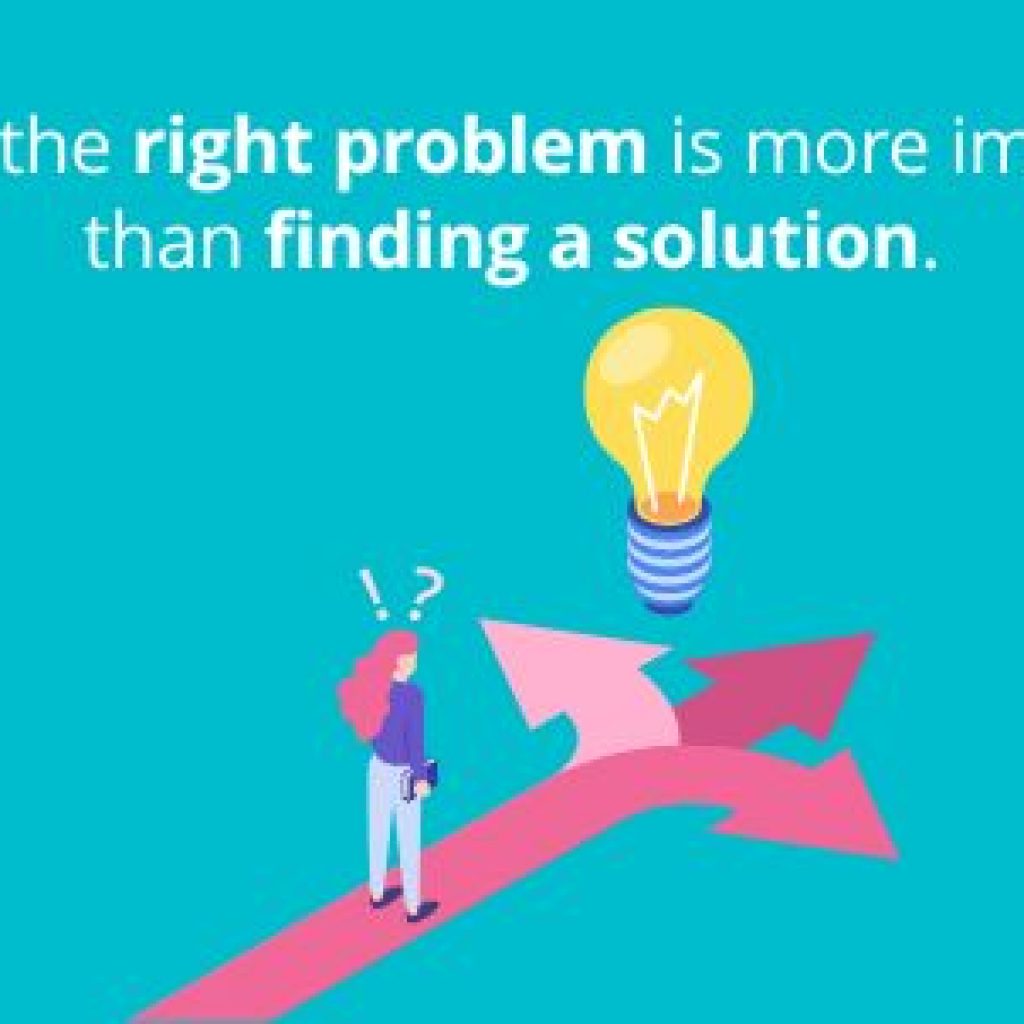Invalidation searches are not a cakewalk. That’s why a lot of time many prior art search service providers or your in-house team fail to return with a result you needed. Weak results or no results lead to weak arguments that hamper your chances to win litigation.
Well, it turns out, you can find results if you use lateral search strategies which examiner would not have thought about at the time of examination. This way, you have a probability of identifying results even when finding one seems near to impossible.
We at GreyB have conducted hundreds of such prior art searches and have experienced this first hand. There have been multiple cases where we took the non-traditional methods to identify bang-on results.
We sometimes even created new out-of-the-box strategies just to find a lead during our search. And today, through this article, we are going to share some of our experiences with you. We will be sharing four cases where finding a result was next to impossible using traditional methods – a root cause of failure in tough patent searches.
Here is the list of the cases where we went unconventional to find a relevant result. Click to jump on any specific case you want to read:
- Case 1: We spotted patterns in a large set of documents which helped us find unsearchable FTP link housing the result
- Case 2: We collected all the cigarette packs sold in Canada to invalidate a composition patent
- Case 3: We did background analysis of an inventor which led to another inventor who disclosed the features we were looking for in a normative text of IEEE Standard
- Case 4: This is a place you can explore when normative texts on Standard yield no results
Before you go ahead and read this article, I would like to make it clear that this isn’t a ‘How to’ article that will reveal secret sauce to hunt prior art. We, through this guide, will be sharing our experiences and learning with you that can help you build your own strategies.
If you are a patent attorney or a patent researcher, you will, for sure, learn a lesson or two by the time you read the last sentence. I also have hope that by the time you search the end of this document, you will feel inspired to carry out your next search assignment with a new approach – rather unconventional.
So without further ado, let’s jump right in:
Case 1: We spotted patterns in a large set of documents which helped us find unsearchable FTP link housing the result
It was a recent project that we received a few days back from a client on “Call Transferring in SIP”. The client suggested us to thoroughly check the IETF standards.
In the beginning of the project, we followed the conventional path – searched patents and IETF standards – and found the same concept published *after* the priority date of the patent. And to top it all, the research papers that surfaced were also had a later publishing date. And in the due course, it became arduous to find any related literature disclosing the concept before the priory date of the patent.
Time and again, we find ourselves in such situations. Then we follow an approach that says: if a project gets harder, challenge yourself to conduct even stronger research.
Long ago, way back in 2011, we heard about a tool by Broad Institute of MIT and Harvard that can detect patterns in a sea of data and thought of trying the same thing. We analyzed the data to check if there are any subtle patterns lurking in the set that can give us what we were looking for?
And we spotted one such pattern. We observed that the subject patent had been researched a lot at the University of Columbia. Not only this, but we also found that the inventors of the patents were associated with this university. There were lots of patents and research papers from this University in the same area. Hence, we decided to go deep and scan through all the conference papers and research papers from this University.
While exploring the University website, we stumbled upon a link directing to the FTP server of University that hosts all the research papers, thesis and conference papers.
After skimming through hundreds of research papers, we finally found something we were hunting for so long. We found some literature where inventors were among other authors, disclosing a similar concept. The first author, however, was not among the inventors of the patent.
We also found one folder in the FTP server hosting research papers of that researcher. Great find! We had the feeling that this is it. Starting the grunt work again, we got down to check all of the research papers in that folder.
And to our expectation, we found one paper discussing the same concept with a publication date before the priority date of the patent under consideration. And with the help of that reference, we were able to build a stronger case for validity.
In all this, the twist was that when we tried to open the same FTP link from the browser or search its content on Google, it wasn’t appearing.
This proves that results are not limited to searchable content only. On the other hand, you have to be vigilant to modify your search strategies to find an existing prior-art.
Modifying search strategies will become monotonous with each search you carry out. Sometimes it’s the type of patent that makes a search hard or easy. It is quite obvious yet overlooked thought that with a different type of patent, you’ll need a different strategy to carry out a search.
Key Take Away: Don’t rely on search engines – patent or web – only. A lot of relevant content you may need will never get indexed. Hence, you may never find it even if you are a black belt in searching on databases. On the other hand, being vigilant and connecting dots can help you.
Case 2: We collected all the cigarette packs sold in Canada to invalidate a composition patent
The patent understudy was related to a cigarette filter having gas adsorbing material and certain specific composition requirements. Our objective was to invalidate the patent for Inter Partes Review.
In patents with specific composition requirements, the task of finding prior-art for inter partes review may become a little difficult, as one might say. But at GreyB, challenges that one might not have yet attempted/accomplished are considered as stepping-stones to success.
We started with the basic search to understand the level of availability of required information in the patent literature. We observed that patents disclosing filters with the gas adsorbing material were abundant.
The specific composition requirements were not being met. This means we have to first find sources that talk about composition. We found that the academic literature discloses composition information. Still, the level of detail that we required was not described in the literature. So what’s next?
After brainstorming and collecting all the wild guesses from the team members, we found that every filter (having toxic nature) must undergo some federal agency test procedure.
There was a great possibility that the company might have submitted the test results to the federal government during the approval process. Thus, at least some information should be available on the federal agency’s website – it was a great lead to explore.
During the search, we also found that law in certain countries, such as Canada, makes the company liable to publish the required specific compositions on the cigarette packet, similar to as you might have seen compositions mentioned on the food packets or drugs. That was a great pointer for us.
We purchased all different cigarette packets that were available in Canada so that we can check the composition mentioned on them. We also located the private testing facilities which can help us in confirming the required composition in certain filters.
Though the packets were recent, we got a great lead of a particular company that had a very high probability of using the same composition in its filters. In the last part of our search, we shifted our focus to that company alone.
A deep dive and finally, identified the relevant document (disclosing filters having gas adsorbing material with the same specific composition information) from the same company, before our priority date. Guess what? The document included all the information that we were looking for.
Key Take Away: More often than not, researchers execute a prior art search like a sprint. But some demands you to run a cross-country race. This was one such case. I’ll repeat the same message from the first case study again – be vigilant like a soldier in a war zone. A single lead that you may ignore can be fatal.
Case #3: We did background analysis of an inventor which led to another inventor who disclosed the features we were looking for in a normative text of IEEE standard
The patent that we received from the client was of Wireless communication domain and covered the process for handling lower priority communication traffic.
We began the search in a conventional way like any other patent prior art search service provider. We started with the development of a detailed understanding of the patent, followed by a thorough analysis of file history to identify the novel aspect of the patent.
Subsequently, we implemented conventional search strategies like keyword-based patent and non-patent search, class-based patent search, and name searches for prominent inventors/authors and assignees/companies in the domain of wireless telecommunication. However, conventional strategies, as they are referred internally at GreyB, yielded neither a result nor a lead.
During the regular brainstorming sessions that we take, one member from the team shared an interesting observation: A person learns things from the environment that surrounds him/her, so there was a possibility that the inventor might have got inspiration or ideas from the colleagues with whom he/she interacted.
That was a good data point for us. We started collecting all the background information of the inventor – university she graduated from, companies she worked/linked with, etc.
From this investigation, we found her to be a member of the committee that develops IEEE standards. Though it looks to be a basic observation, we got the hunch that we are going to find something here.
We knew that a lot of discussions happen in these committees and various ideas get exchanged. Hence, we reviewed each and every discussion and IEEE papers where the inventor had a contribution.
Guess what, we came across a version of IEEE standard 802.11 from 2007 that described the very similar though in a bit different manner.
That was a great find. Before we could have done a happy dance, we found that this standard was published post the priority date of the subject patent. Back to the square one!
We were well aware that there were numbers of members that contributed to this Standard, hence there was a hope that the relevant section could have been proposed by another contributor and before the priority date.
We tried to identify the time when the relevant section was proposed for approval to be a part of the standard. Now, to identify this time, we again brainstormed and found that we have two choices:
- Check literature by every contributor of the Standard which was going to be a time-consuming task
- Check normative text proposed by contributors of an IEEE standard that either get accepted or rejected as part of the final published standard
Yes, you’re right; we selected the option (b) and started digging normative texts that contributed to the relevant portion of the Standard. Finally, we found a relevant document that was submitted to the committee for consideration, before the priority date of the subject patent.
Voila. This information was exactly what we were looking for. The whole project was a roller coaster ride for us.
Key Take Away: Teamwork makes the dream work! Even if someone in your team is not a part of a project in hand, his ideas can give you lead. All you need is a good brainstorming session with your teammates.
We can’t stress enough on this aspect. We cracked some tough patent infringement cases due to the same group brainstorming and a few other problems which are beyond the scope of this article.
Case #4: This is a place you can explore when normative texts or Standard yield no results
We received a request from a client to invalidate a patent that is related to the concept of a random access procedure. More specifically, the patent was talking about a specific equation.
In this case, we got an important lead during the start of the search. While checking the file history of the patent, we observed that the concept of random access procedure was used in developing many standards.
We tried to use this lead and started building different routes to reach the required result. The initial two routes were (1) Searching Standards and (2) Searching Patents.
We decided to act conventionally at first and started searching for patents. However, there was not much patent literature and soon we knew that searching in patent literature is going to be a futile effort.
We quickly moved all our efforts towards standards. However, when we started searching in standards it was like finding a pearl in an ocean. Since we were not able to narrow down on a particular standard, the literature was overwhelming and hence, it was becoming a big challenge for us.
From this point, we started segmenting the data related to standards. We found a few standards that utilized a similar equation and hence decided to check for the documents that were used in developing the standard. As we started backtracking the technology, we were running out of standards to be checked.
Anyhow, we kept on looking but every standard seemed to disclose the equation after the priority date until we identified a document that disclosed exactly what we were looking for.
But guess what? It belonged to the assignee of the patent that we were trying to invalidate and above all was the same date as the priority date of the patent.
Various thoughts that there is nothing before this document started coming in our mind. However, we decided not to give up otherwise we would not be able to overcome the challenge.
Usually while studying standards, we cover the normative text that contributes towards the formation of the standard. However, in our case, the closest normative text belonged to the same assignee and that too on the same date.
From this point, we decided to check the change request. Change requests are amendments in the proposed normative texts. So, we started checking specifically the change requests.
Since the change requests are not classified/titled/categorized; hence, without opening each change request, the search could not have been progressed.
Now, we were at a crossroads again with two choices to:
- Search each change request from the beginning of the development of the standard, or
- Backtrack the change request from the point of introduction of the equation
Since the literature was huge, we decided to check the change request in reverse chronological order to observe the development of the respective documents.
On checking each change request, we identified a paper of CATT which had been subjected to amendments. The suggested amendments included an equation similar to the required equation.
Perhaps, only a few of the suggested amendments were implemented and hence the updated normative text documents related to the identified change request did not showcase the required information.
However, the amendments showcased the prior knowledge of the equation and hence became a relevant reference. The paper was before the priority date of the subject patent and we were able to build a strong case of invalidation for the client.
This invalidation search turned out to be one of the toughest nuts but we were happy that we were able to crack it. If you are going to challenge us, we are not going to leave the grounds easily.
Key Takeaway: You can observe that we started exploring Standards this time which was learning from the past where it bore fruits. But in this case, we weren’t able to find any lead. If we would have stopped after done with searching on Standard, this case wouldn’t get solved.
What we did here, we took one more step and went ahead to explore the change requests.
This is the key and as they say in the military, if you are going through hell, keep going!
Relevant ongoing cases where above mentioned strategies can be applicable:
- 2-21-cv-00010 (EDTX) Ericsson, Inc. et al v. Samsung Electronics Co., Ltd. et al
- Patents involved in the case: US10172066B2, US8301149B2, US9037166B2, US9107082B2, US9509605B2, US9692682B2
- Technology areas involved: Communication, UE, Data fames
- 6-21-cv-00026 (WDTX) Neo Wireless LLC v. Apple Inc.
- Patents involved in the case: US10075941B2, US10447450B2, US10833908B2, US8467366B2, US9363066B2
- Technology areas involved: Multi-carrier packet communication
More recommended strategies that can be explored for such cases:











